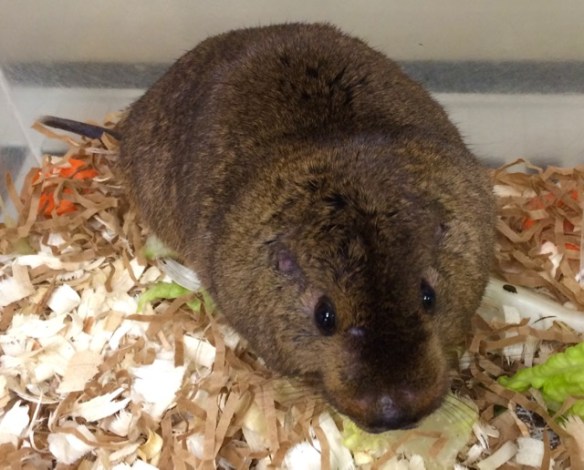I feel almost disloyal, saying it, but here goes: I’m working on a new project. A non-junco project.
Not that I’ve stopped working on juncos. When we teach science, we tell students “Science is never finished”—true in the larger sense that science is always testing new hypotheses, refining old theories, and correcting erroneous ideas; but also true in the sense that we scientists pretty much never stop doing things once we start them. I’m still analyzing data on the juncos.
But I’m now also generating data on tuco-tucos.

The noble tuco-tuco, a subterranean South American rodent.
The tuco-tuco project is an opportunity to learn new techniques and broaden my field of expertise. The project is genetics-based, like the bird paternity work I have talked about here before—but using much more cutting-edge techniques, with more testing of protocols and “Hmm, that’s a funny result” and complicated technology. The goal isn’t to find out paternity in the tuco-tucos, but something much larger in scope. (I’m going to keep it mysterious here for now, since we’re still at the early stages of the project.)
The tucos are unusual, intriguing creatures. Most people have never even heard of them. When you consider that the other animals I’ve studied are House Wrens and juncos, tuco-tucos are undeniably the most exotic animal I’ve had the privilege to study.

A young tuco-tuco. (Don’t be worried by the medical-looking gloves – I’m not doing anything bad to these little guys. The gloves are just standard for handling them.)
I’m excited to be working with the tucos. But it’s just… a little weird. Where are the feathers? Where are the eggs?

Why isn’t it flying away?

Rodents usually get a bad rap… but they’re cute. Those eyes cannot be denied. I am excited to hear more about your work with these little critters. :)
Word Puzzle: Take the name of a common ground-nesting bird, remove a “J” and an “N”, add a “T”, and double the result to create the name of a dark-eyed South American rodent.
Haha! Just like on Cartalk.
Cool! I’m a bird lover, too, but I’m also finding that obscure rodents are fascinating as well. I didn’t know tuco-tucos were studied in laboratories!
They aren’t usually! We’re the only captive tuco colony I know of, at least in North America. (You can’t tell from the photos, but they aren’t in your standard boring lab set-up: they have tunnels and things to chew and build nests out of and yummy treats, not to mention a veritable army of research assistants looking after their every need.)